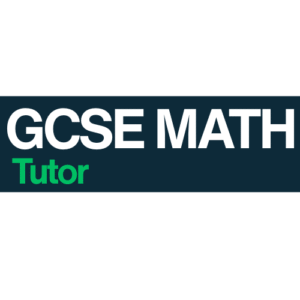Geometry is a core topic in the GCSE Maths curriculum and is vital for success in both Foundation and Higher tiers. It covers the study of shapes, sizes, angles, and dimensions—skills that are essential in mathematics, science, engineering, and real-world problem-solving. This comprehensive guide will help you master key geometric concepts, focusing specifically on shape properties, area, and perimeter, all in alignment with the UK GCSE standards.
Explore full GCSE Geometry tutoring support
🔹 Why Geometry Matters in GCSE Maths
Understanding geometry is more than just memorising formulas—it’s about recognising patterns, visualising objects, and applying logic. In GCSE Maths, geometry topics account for around 15–20% of the total marks. You’ll be tested on your understanding of:
- 2D and 3D shapes
- Area and perimeter
- Angles and symmetry
- Surface area and volume
- Transformations and constructions
🟢 Shape Properties Explained
✅ 2D Shape Properties
A strong understanding of 2D shapes is essential. Common shapes include:
- Square: All sides equal, all angles 90°
- Rectangle: Opposite sides equal, all angles 90°
- Triangle: 3 sides, sum of interior angles = 180°
- Circle: No sides, every point on the edge is equidistant from the centre
- Trapezium: One pair of parallel sides
🧮 Properties to Remember
- Regular shapes: All sides and angles are equal
- Irregular shapes: Sides and angles are not equal
- Polygons: Closed shapes with straight sides (triangle, hexagon, octagon)
✅ 3D Shape Properties
3D shapes, also called solids, include:
- Cube: 6 equal square faces
- Cuboid: 6 rectangular faces
- Sphere: One curved surface, no edges or vertices
- Cylinder: 2 circular faces, 1 curved surface
- Pyramid: Triangular faces meet at a point
📐 Key Terms:
- Faces: Flat or curved surfaces
- Edges: Lines where two faces meet
- Vertices: Points where edges meet
🟢 Mastering Area in Geometry
✅ Area of 2D Shapes
Area is the amount of surface a shape covers. Here are common formulas:
🔹 Rectangle:
Area = length × width
🔹 Triangle:
Area = ½ × base × height
🔹 Parallelogram:
Area = base × vertical height
🔹 Trapezium:
Area = ½ × (a + b) × height (where a and b are parallel sides)
🔹 Circle:
Area = π × r² (r = radius)
🧠 Tips:
- Always use the correct units (cm², m²)
- Use calculator π for accuracy (π ≈ 3.1416)
🟢 Understanding Perimeter
✅ What Is Perimeter?
Perimeter is the distance around a shape. It’s measured in linear units (cm, m).
🔹 Formulas for Perimeter
- Square:
Perimeter = 4 × side - Rectangle:
Perimeter = 2 × (length + width) - Triangle:
Perimeter = sum of all sides - Circle (circumference):
C = 2πrorC = πd
🧠 Application in Word Problems:
Example: A rectangular garden is 10m long and 6m wide.
Find its area and perimeter.
- Area = 10 × 6 = 60m²
- Perimeter = 2 × (10 + 6) = 32m
🟢 Common GCSE Exam Mistakes in Geometry
- Confusing radius with diameter
- Forgetting units
- Using height instead of slant height in triangles
- Mixing up formulas for similar shapes
Tip: Always draw diagrams and label known values.
📝 Geometry Practice Questions (With Answers)
- Find the area of a triangle with a base of 8cm and a height of 5cm.
Solution: ½ × 8 × 5 = 20cm² - What is the perimeter of a rectangle with a length of 12cm and a width of 7cm?
Solution: 2 × (12 + 7) = 38cm - Find the area of a circle with radius 4cm.
Solution: π × 4² = ≈50.27cm²
📚 Real-World Uses of Shape, Area & Perimeter
- Architecture: Calculating material for floors and walls
- Gardening: Planning lawn size and fencing
- Interior Design: Measuring carpets or furniture layout
- Construction: Working with building plans and tiling
🎯 How to Revise for Geometry in GCSE Maths
- Use labelled diagrams and sketching
- Practice problems with different shape types
- Use BBC Bitesize and AQA/Edexcel question banks
- Revise flashcards with key formulas
- Get help from a tutor for tough concepts
Get personalised geometry help
✅ Final Thoughts
Geometry doesn’t have to be complicated. With consistent revision and a clear understanding of shape properties, area, and perimeter, you can excel in this key GCSE Maths topic.
Master these core concepts to build a strong foundation for higher-level maths and real-world applications. For expert guidance and exam support, visit GCSE Maths Tutor.


